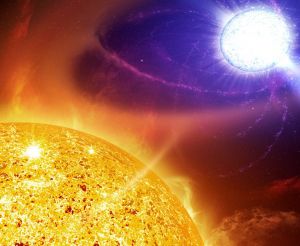 Until recently, symbiotic binary systems in which a white dwarf accretes from a red giant were thought to be mainly a soft X-ray population. Here we describe the detection with the X-ray Telescope (XRT) on the Swift satellite of nine white dwarf symbiotics that were not previously known to be X-ray sources and one that had previously been detected as a supersoft X-ray source. The nine new X-ray detections were the result of a survey of 41 symbiotic stars, and they increase the number of symbiotic stars known to be X-ray sources by approximately 30%. The Swift/XRT telescope detected all of the new X-ray sources at energies greater than 2 keV. Their X-ray spectra are consistent with thermal emission and fall naturally into three distinct groups. The first group contains those sources with a single, highly absorbed hard component that we identify as probably coming from an accretion-disk boundary layer. The second group is composed of those sources with a single, soft X-ray spectral component that probably originates in a region where low-velocity shocks produce X-ray emission, i.e., a colliding-wind region.
Until recently, symbiotic binary systems in which a white dwarf accretes from a red giant were thought to be mainly a soft X-ray population. Here we describe the detection with the X-ray Telescope (XRT) on the Swift satellite of nine white dwarf symbiotics that were not previously known to be X-ray sources and one that had previously been detected as a supersoft X-ray source. The nine new X-ray detections were the result of a survey of 41 symbiotic stars, and they increase the number of symbiotic stars known to be X-ray sources by approximately 30%. The Swift/XRT telescope detected all of the new X-ray sources at energies greater than 2 keV. Their X-ray spectra are consistent with thermal emission and fall naturally into three distinct groups. The first group contains those sources with a single, highly absorbed hard component that we identify as probably coming from an accretion-disk boundary layer. The second group is composed of those sources with a single, soft X-ray spectral component that probably originates in a region where low-velocity shocks produce X-ray emission, i.e., a colliding-wind region.
Authors: G. J. M. Luna, J. L. Sokoloski, K. Mukai, T. Nelson

